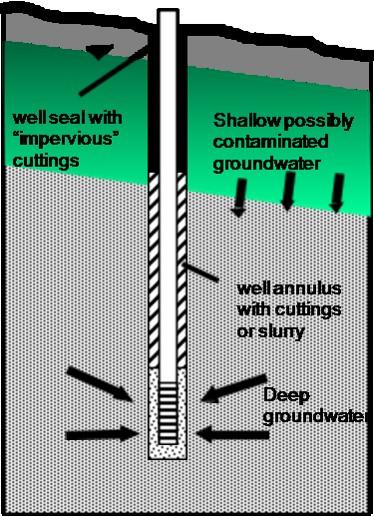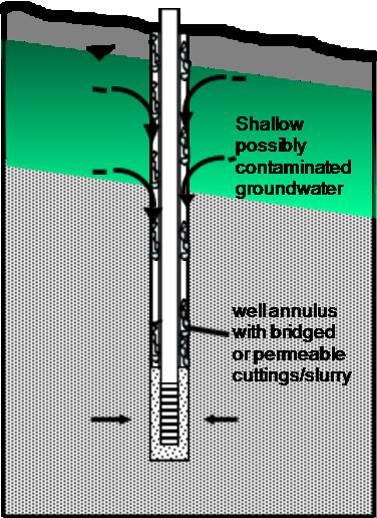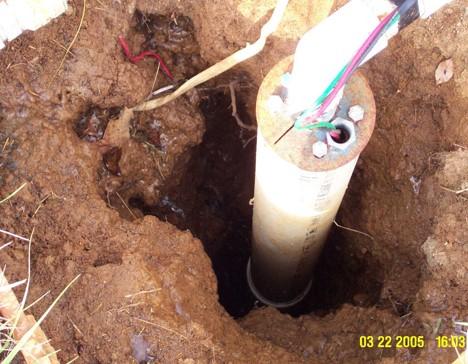Drilled Well Construction
In Kentucky, drilled wells are constructed using several different drilling methods. These methods range from mud/air rotary to sonic methods. Additional information on drilling methods can be found here.
Drilled wells that are constructed in bedrock typically have a steel or plastic casing. The space between the outside of the casing and the borehole wall is called the annulus space, which should be backfilled an impervious material. This is done to prevent surface water and/or shallow groundwater, which may carry potential contaminants, from entering the well. Plastic or steel casing can be installed the entire depth of the well. In this case there is typically section, at the bottom of the casing, that is slotted (the screen) to allow groundwater to enter the well. A properly constructed water well should only allow groundwater from the identified aquifer to enter the well.

Diagram above is of properly constructed drilled well. Notice that groundwater is entering the well through the screened section of the well. Diagram is not to scale.

Diagram above is of an improperly constructed drilled well. Notice that because the annulus is not properly filled, surface water and shallow groundwater are allowed to enter the well by flowing down the well annulus. Diagram not to scale.

Above is an example of an unfilled well annulus (void around PVC well casing). On the left side of the picture, surface water can be seen flowing into the annulus.
As you can see in the improperly constructed well diagram above, if a well is not constructed properly potentially contaminated surface water and shallow groundwater can enter the well and potentially contaminate the aquifer, which is your local drinking water supply.
Properly maintaining your wells ensures that you will have safe drinking water and that you will not be the source of contamination of surrounding groundwater resources. Protecting your well-head is the simplest way to maintain your well.
Plastic casing is a relatively new casing material that is gaining acceptance. The following page will give you reasons for its use over steel and possible drawbacks for its use.
Steel casing are the standard casing material. On the following page you can learn more about its use and some problems that may occur with steel casing.
